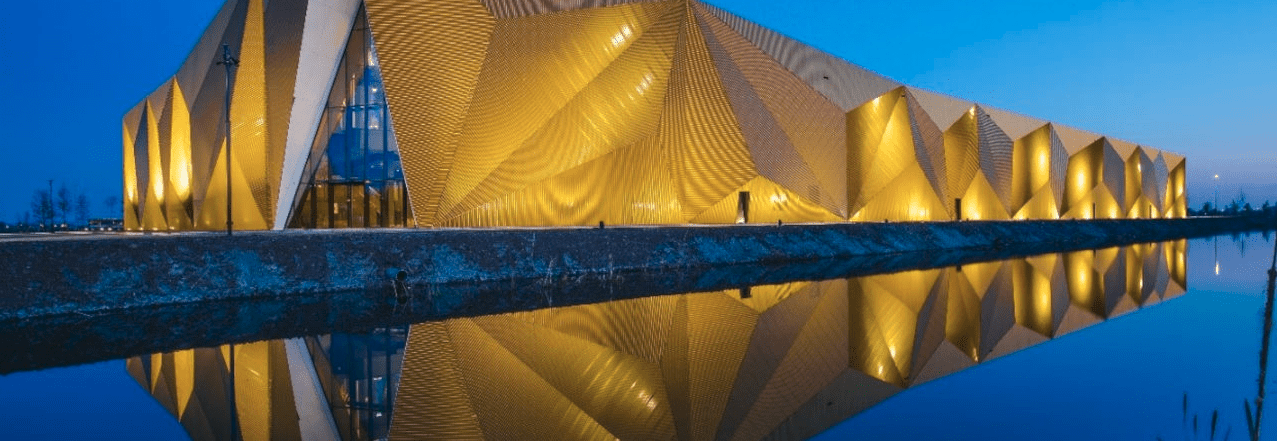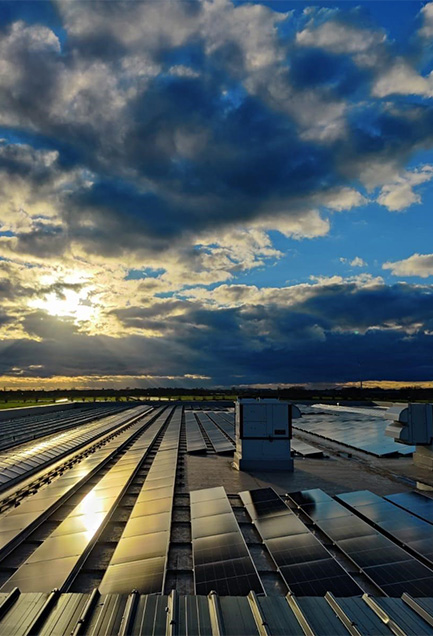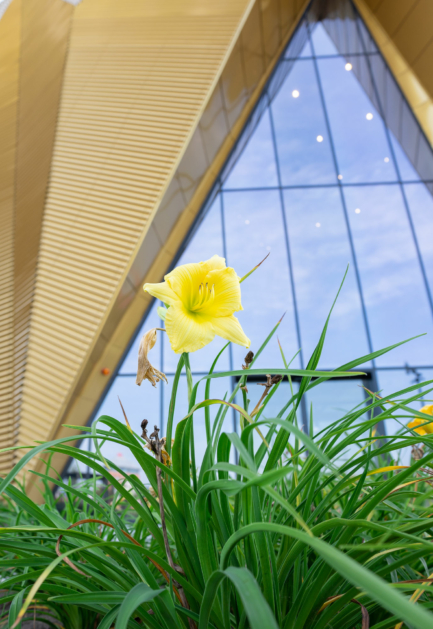About us

Vision & Mission
Vision
The monetary landscape has been changing significantly in recent times. The Royal Dutch Mint wants to continue to grow in accordance to the changing market. Despite the rise of the cashless payments, cash continues to play an important role in the stability of the economy. Moreover, coins have been used to convey a national identity or a political message as far back as Roman times. To this day, the coin remains a unique means of communication. As one of the top producers of coins and coin-
related products worldwide, we are able to offer our customers the products and services they desire.
Mission
The Royal Dutch Mint wants to make a difference by serving the national and international markets in a leading way with coin products. Our products are distinguished by reliability, innovation, quality and creativity. In addition, sustainability is key in our production process.
History

History
The Royal Dutch Mint
The Royal Dutch Mint was founded in Utrecht in 1567, placing it among the oldest businesses in the Netherlands. During the 16th century, the Netherlands was home to a number of mints, each of which struck their own currency. In 1806, it was decided that the country should have one, central mint – the Utrecht Mint – and a single national currency.
After many years as a State-run institution, the Mint became an independent commercial organisation in 1994. The Dutch State remained involved as 100% shareholder. In 1999, the Mint was granted the right to bear the prestigious ‘Royal’ predicate. The King of the Netherlands reserves this predicate for a select group of Dutch businesses, as it symbolises the King’s respect, trust and appreciation for those organisations. In 2016, the Royal Dutch Mint became the first European mint to privatize its operations. This step enabled the Mint to improve its responsiveness, customer service and efficiency by means of a more effective decision-making structure and the ability to pursue long-term goals and strategies.

History
The Dutch Vault
When the euro was introduced in 2002, the Royal Dutch Mint significantly expanded its production capacity in order to fully meet the resulting demand. This additional production capacity has since been utilised to produce coins for a growing number of other countries as well. To date, the Royal Dutch Mint has struck circulation currency and commemorative coins for over 70 countries. As activities expanded, the historic building in Utrecht which traditionally housed the Mint proved unable to keep pace with the demands of coin production. In 2020, the Royal Dutch Mint therefore moved to ‘The Dutch Vault’, an ultramodern building in Houten. This new facility is fully energy self-sufficient and is equipped with a state of the art security system.
History
Other historical milestones
The Royal Dutch Mint has been closely involved in various major developments within the coin industry, such as the establishment of the DCA (Dutch Currency Association), the introduction of laser engraving. In 2005 the Royal Dutch Mint joined of the prestigious World Money Fair as a strategic shareholder together with Münze Österreich, Samler Huset, MDM and the Berufsverbund des Deutschen Münzenfachhandels. Since that first edition, the World Money Fair has grown into the largest and most important coin fair in the world.
Sustainability

Introduction
Cash makes the world a better place. As a means of payment, cash is independent of technology and serves to make the economy more robust. Cash is also the most inclusive means of payment as there are no barriers to its use. You do not need to own a bank account or be literate, have specific training or access to a mobile phone – nor any other such requirement – in order to use cash. What’s more, submitting payment in cash is anonymous and the only way to completely safeguard your privacy.
In that light, the Royal Dutch Mint firmly believes we are contributing to a better society by providing cash to economies around the world at competitive prices.
The Royal Dutch Mint has integrated Corporate Social Responsibility in its corporate policies and adheres to the Ten Principles of the United Nations Global Pact. The Royal Dutch Mint focuses on those areas in which our activities can have the greatest possible impact.

Environment
The Royal Dutch Mint has formalised its environmental ambitions and direction in its ISO 14001 Environmental Policy. We strive to meet the goals set out in the Paris Agreement. Permanent improvement of environmental performance is a key priority within our organisation; measures to that end have been embedded in all departmental strategies and implemented in existing workflows.
In December of 2020, a solar power plant on our roof was taken into operation. Because this array provides us with enough energy to be self-sufficient, all coins produced by the Royal Dutch Mint are now 100% energy-neutral. Our new building is also fossil-fuel free and is heated using electricity alone. It has an advanced Heating, Ventilation and Air Conditioning system that re-uses the heat of the minting presses to heat the building in winter. In the Summer it uses the cold night air to cool the building while, at the same time, removing heat of the minting presses from the building during the day.
And because the Royal Dutch Mint also embraces the principles of the circular economy, 100% of our waste is sorted and if possible recovered – including all packaging waste. We also procure cardboard and paper with an FSC label, which certifies those materials are the product of sustainable forestry. What’s more, we have installed a system to regulate the reuse of rainwater for specific purposes.
Anti-corruption measures
The Royal Dutch Mint actively works to combat corruption in all its forms, including extortion and bribery. We strive to do business only with companies who wholeheartedly endorse the same values. Our suppliers have been obliged to sign an anti-corruption declaration since 2017. All employees of the Royal Dutch Mint have pledged to support the eight principles of ethical business, as also laid down in our internal policy.

Ethical sourcing
When sourcing precious metals, the Royal Dutch Mint works exclusively with suppliers who have obtained LBMA (London Bullion Market Association) certification. This guarantees not only that a supplier’s metals have been responsibly and ethically sourced, but that the metals meet a standard of quality as well. The LBMA quality mark stands for a robust, fair, effective and transparent market. The Royal Dutch Mint strongly supports the principles promoted by the LBMA in connection with the integrity and effective functioning of the global market. These principles pertain to ethics, governance, compliance, risk management, information sharing and business conduct.
Besides precious metals, we strive to ensure that other products we purchase are also fair-trade whenever possible – right down to the coffee we serve.
Education
Use of money
The Royal Dutch Mint is in close contact with central banks across the globe and understands the challenges and importance of communication with the public. Best practices can be applied to explain the mint’s decisions to the public, such as why new coins or changes to existing coins are being introduced, and how such changes will support the proper function of the local economy.
The Royal Dutch Mint also aims to educate local communities on the use of money. For instance, in March 2021 we partnered with the Dutch Ministry of Finance to realise “Money Week”, a project aimed at teaching children how to handle money and how to budget their income and expenses.
Cultural heritage
At least once a year, we promote a cultural heritage theme to create awareness among the greater public in countries where we actively advertise and distribute collector products. These heritage themes may be either material or immaterial.
Heritage themes we have promoted in the past five years include the diamond-cutter’s craft, circus culture, Pride Amsterdam and Belgian beer culture.
Charitable contributions
Each year, we partner with at least one charity that is celebrating a jubilee, whereby we produce and promote unique coins to commemorate the anniversary. We then donate the proceeds from this coin issue to support the charity or charities in question.
The Red Cross is just one of the charities we have supported in the past five years.
